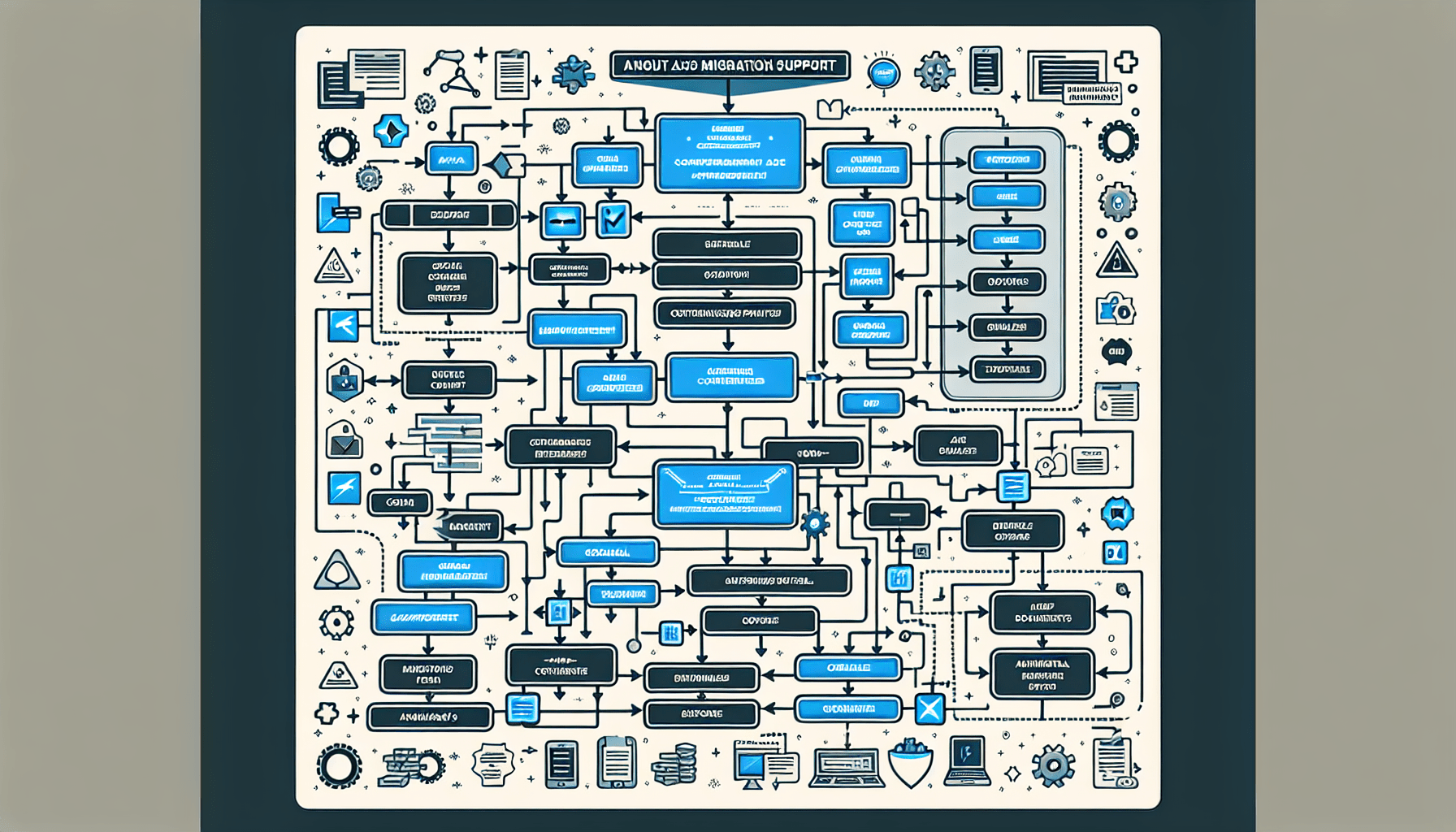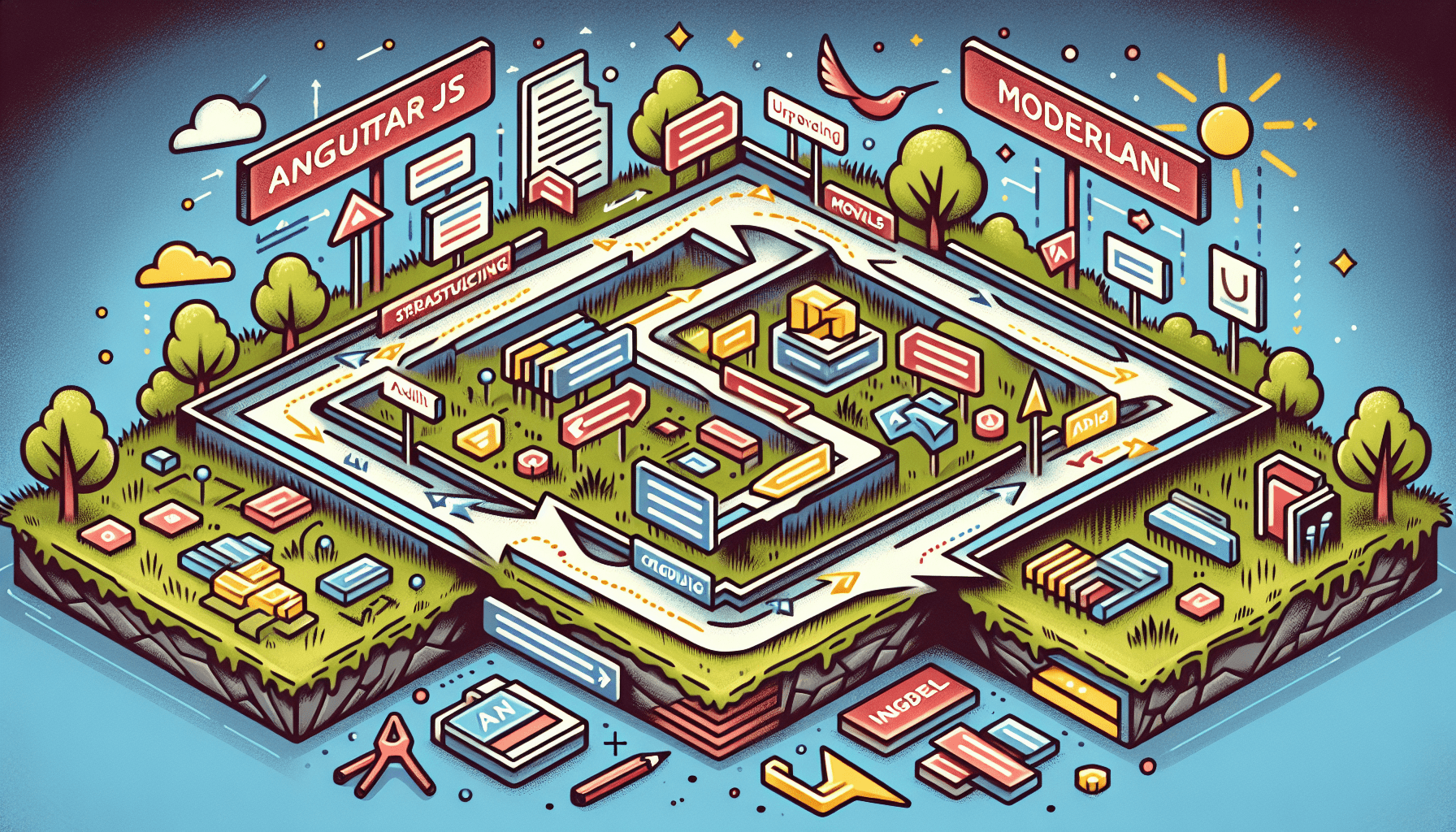AngularJS Migration Support : Smooth Transition

AngularJS Migration Support
As the digital landscape continues to evolve, the need for the modernization of legacy systems, including those built with AngularJS, becomes increasingly critical. Recognizing this, migration support services have been developed to assist businesses in transitioning from AngularJS to more current frameworks, such as Angular.
This process not only helps in leveraging the latest web technologies but also ensures that applications remain maintainable, scalable, and secure in a market where user expectations are constantly advancing.
Hey there, tech fanatic! Are you enthusiastic about migrating from AngularJS to Angular? If so, you’re not alone. Many builders are navigating this journey, and as we speak, I’m right here to inform you through it like a pal sharing a cup of espresso and a few recommendations.
Why migrate from AngularJS to Angular?

The reasons for making the leap from AngularJS to Angular are compelling. First off, Angular offers improved performance thanks to its modern architecture, which is a significant step up from its predecessor. It’s designed to support large-scale applications with ease, ensuring that your projects can grow without running into the limitations that AngularJS might impose.
Moreover, Angular comes with a robust suite of tools and a component-based structure that simplifies development and maintenance, making your coding life a whole lot smoother. So, pull up a chair, and let’s dive into the benefits and strategies for transitioning to Angular, ensuring you’re equipped for a seamless upgrade.
AngularJS has been a long-time favorite for constructing dynamic internet apps. However, with the tech world evolving quickly, Angular provides improved efficiency, trendy options, and long-term help. Sounds engaging, proper? Let’s dive into how one can make this transition as easy as possible.
Tip Box:
☕ Migration Pro Tip: Start small! Begin by migrating much less advanced parts to get a feel for the method. It’s like easing into a brand-new workout routine—begin with gentle weights rather than going all out!
Understanding the Differences
Before we get into the nitty-gritty, let’s evaluate AngularJS and Angular:
| Feature | AngularJS | Angular |
|---|---|---|
| Architecture | MVC (Model View Controller) | Component-based structure |
| Performance | Two-way knowledge binding | Unidirectional knowledge circulate for higher effectivity |
| Tooling | Limited tooling | Extensive CLI and construct optimization |
| Community Support | Declining | Active and rising |
Given the above considerations, it’s clear that the debate between different frameworks and their capabilities, such as AI personalization, is ongoing. Developers must weigh the pros and cons of each framework’s approach to features like two-way knowledge binding versus unidirectional knowledge flow, assessing which will yield more efficient and maintainable codebases.
Moreover, the level of tooling and community support can greatly influence the adoption and success of a framework, with a robust set of tools and an active community often being pivotal in resolving development challenges and pushing the technology forward. As you possibly can see, Angular brings quite a bit to the desk when it comes to efficiency and help.

Real-World Anecdote:
🔍 Developer’s Insight: Sarah, a developer from TechCorp, shared that after migrating to Angular, her staff observed a 30% enhancement in app load occasions. Impressive, proper?
Steps to a Successful Migration
1: Audit Your Existing App: Before diving headfirst into the migration process, it’s crucial to perform a comprehensive audit of your current application. This step is like laying out all the pieces of a puzzle before you start assembling it—it gives you a clear picture of what you’re working with.
During the audit, pay attention to your app’s structure, dependencies, and any custom code that might affect the transition to Angular.
Identifying potential hurdles early on can save you a significant amount of time and resources in the long run. Identify which parts want updating or will be changed fully. This will enable you to plan your migration technique successfully.
2: Set Up Angular: Develop a Migration Roadmap: Once you have a clear understanding of the components that require attention, the next step is to create a detailed migration roadmap. This plan should outline the sequence in which you will migrate parts of your application, prioritize critical functionalities, and establish milestones to monitor progress.
By setting up a structured approach, you can ensure a systematic and less disruptive transition, allowing your team to address issues methodically and maintain focus on delivering a seamless user experience throughout the process. Install Angular CLI and arrange a brand new Angular setting. This is your new playground, so be certain it’s prepared for motion.
3: Upgrade Incrementally: Embrace Modular Development By breaking down your application into smaller, manageable modules, you can tackle the upgrade in a more controlled and efficient manner. Modular development not only simplifies the process of updating Angular but also makes it easier to test and maintain your codebase.
This approach allows individual teams to work on different aspects of the project without stepping on each other’s toes, leading to a more collaborative and productive environment. Use instruments like ngUpgrade to facilitate a hybrid method in which both AngularJS and Angular coexist. This makes the transition much less of a jitter.
4: Testing, Testing, Testing: As crucial as the transition strategy itself, rigorous testing cannot be understated. It’s imperative to thoroughly test every component, service, and application feature as you migrate from AngularJS to Angular.
Automated testing frameworks such as Jasmine or Mocha, coupled with end-to-end testing tools like Protractor, can help ensure that your application maintains its integrity and functionality throughout the transformation process.
This not only helps in identifying issues early on but also provides a safety net that supports continuous integration and deployment practices. Ensure that every part works seamlessly as soon as it is migrated. Automated testing instruments are usually a lifesaver right here.
5: Optimize and Refactor: Continuously monitor performance metrics to identify bottlenecks and areas that can benefit from optimization. Refactoring code not only improves readability but also enhances the overall efficiency of the application.
Regular optimization ensures that the AI personalization engine remains agile and can adapt quickly to new data inputs and user behaviors, maintaining a high standard of personalized experiences. Post-migration, streamline your code for efficiency. Think of it as decluttering your workspace for maximum effectiveness.
Interactive Element Suggestion:
📊 Poll Time: What’s your largest concern about migrating to Angular? (Options: Performance, Learning Curve, Time, Other)
The Benefits Await
Embracing Angular for your projects comes with a host of advantages that can significantly enhance user experience. With its powerful data-binding features, Angular ensures that your UI is always in sync with the backend, providing a seamless and interactive experience for users.
Moreover, the modular structure of Angular applications not only makes them easier to maintain but also allows for a more collaborative development environment where teams can work on different features simultaneously without stepping on each other’s toes.
Migrating to Angular isn’t only a tech improvement; it’s like shifting right into a spacious new workplace with a view. You get an extra environment-friendly, scalable, and maintainable codebase that’s prepared for future improvement challenges.

Call to Action: If you’re considering this transition, it’s time to embrace the Angular advantage. Our team is ready to guide you through the migration process, ensuring a smooth and seamless shift to this robust framework.
By partnering with us, you’ll unlock the full potential of your application, paving the way for an enhanced user experience and a future-proof digital presence.
Let’s collaborate to make your software architecture as breathtaking as that new office view. Ready to leap? Discover how outsourcing can streamline your improvement course as we speak! Check out our detailed information on agile methodologies here.
Stay Updated
Embracing AI personalization isn’t just about staying ahead of the curve; it’s about redefining the curve entirely. By integrating AI-driven insights into your digital strategy, you can tailor experiences to each user like never before, ensuring that every interaction is as unique as your customers themselves.
Imagine a world where your digital services evolve with the needs and preferences of your audience, creating a dynamic and engaging user experience that not only satisfies but delights. Let’s turn that imagination into reality and set a new standard for what digital personalization truly means.
The tech panorama adjusts rapidly. Keeping your expertise and information current is essential. Make it a positive to revisit your methods and instruments, usually to remain ahead of the curve.
As AI personalization becomes more sophisticated, it’s crucial to understand the impact it has on user experience. By harnessing the power of machine learning and data analytics, businesses can deliver content that is tailored to individual preferences, behaviors, and interests.
This level of customization not only enhances engagement but also fosters a deeper connection between brands and their audiences, ensuring that each interaction is as relevant and impactful as possible.
I hope this information makes your migration journey rather less daunting and much more thrilling. Remember, each step ahead is progress. Happy coding!




94jj5o
z661es
mg821y
9fv8pp
1l7n55
zo0ew0
Thanks , I have recently been looking for information about this subject for ages and yours is the greatest I’ve discovered so far. But, what about the conclusion? Are you sure about the source?
Outstanding post, I think people should learn a lot from this website its rattling user genial.
Loved this! Super helpful and easy to follow. Thanks for sharing!
Awesome content as always. Keep up the great work!
Thanks for the valuable information. It really helped me understand the topic better.
i27vo4
As I website possessor I think the content here is really excellent, appreciate it for your efforts.
I don’t think the title of your article matches the content lol. Just kidding, mainly because I had some doubts after reading the article.